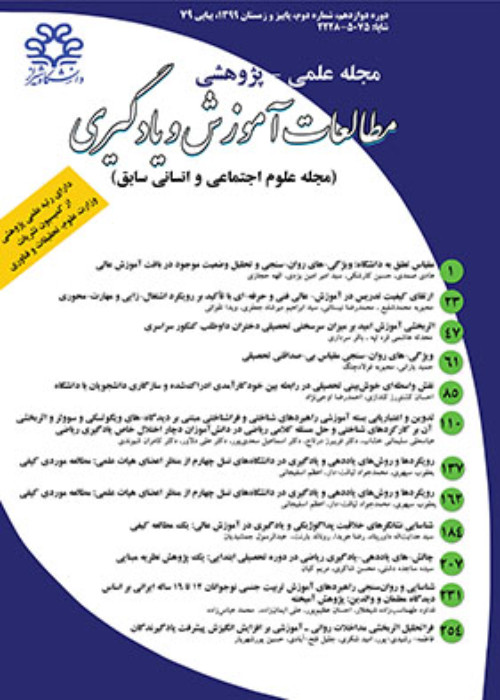A Systematic Review of the Capabilities of the Third Generation University
One of the solutions offered by researchers to respond to changes and adapt to new conditions and challenges facing universities is to move towards a third generation university model. As Gagnides (2016) stated, the 3rd generation university is very successful for today's environment and the expansion of these universities can improve innovation at national level and thus improve the economic conditions of the country. In Iran, in order to respond to changes and adapt to new challenges and conditions in the field of higher education, attention has been paid to the subject of third generation universities and efforts have been made to address this issue. For example, according to articles 48 and 21 of the Fourth Economic, Social and Cultural Development Plan of the Islamic Republic of Iran, which emphasize the development of entrepreneurship to increase the efficiency of university students and graduates, the Code of Entrepreneurship Development Plan, referred to as KARD, has been compiled and implemented in all the universities of the country (Country Code of Entrepreneurship Development Plan, 2006). Given the aforementioned and the need to move on to the third-generation university, it is first essential to specify what it takes to establish a third-generation university so that it will be possible to make the necessary planning for it. The most distinguishing characteristic of a third-generation university is its concern not only with the educational, but also with economic and social issues as well. Therefore, the present study aimed to extract from the literature the economic and social requirements of third-generation universities, and thereby to better make known this generation of universities.
- The main question this study aims to answer is: - What are the prerequisites of the third generation university?
The required information for this study was collected through a systematic review of the literature using both qualitative content analysis and MaxQDA software for quantitative content analysis. The Scopus database was used as one of the top two databases to extract the required research and 150 studies were reviewed considering the relevance of the research to the subject under investigation.
Based on the studies reviewed, the prerequisites of a third-generation university could be divided into twenty-one dimensions, which include: - Market-oriented governance - Attracting and developing innovative, entrepreneurial and community-driven executives - Strategic communication with multiple stakeholders - Paying attention to the third generation issues in the strategic orientation of the university - Attracting and developing innovative, entrepreneurial and community-driven human resources - using new information and communication technologies - Sustainable and diverse financial management - Risk Management for third-generation universities - Evaluation management and quality assurance of the third-generation university - Knowledge management - Achieving a dynamic structure - Aligning education with the requirements of the third-generation university - Aligning research with the requirements of the third-generation university - Innovation management - Creating knowledge companies - Intellectual property management - Internationalization of the university - Playing a role in the economy of the region and of the country - Playing a role in social development - Sustainable management of the internal operations in the university - Culture entrepreneurship and sustainability
The results of the study, specifying the prerequisites to the development of a thirdgeneration university, provide a framework for evaluating both the activities carried out to arrive at a third-generation university and the guidlines proposed by policy-makers and administrators, thereby paving the way for the expansion of third-generation universities. Accordingly, the policy makers and university administrators, seeking to derive benefits from the establishment of a third-generation university, are recommended to use the guidlines extracted from the literature in the current investigation. The results of the study, indeed, can guide them to the right things to do and the appropriate strategies to adopt appropriate strategies to make the development of the third-generation university a possibility. Obviously, if universities decide to move towards the creation of a third Generation University and the re-create the university, the designers are recommended to apply the above guidelines in vision, mission, strategy, organizational values, organizational structure, academic leadership, organizational processes and systems, as well as in the organizational culture, and in other university management systems. Future research, therefore, can consider the implementation of these guidelines in Iranian universities and explore the social and cultural constraints that might impede their implementation, thus specifying the directions that shoud be taken.
- حق عضویت دریافتی صرف حمایت از نشریات عضو و نگهداری، تکمیل و توسعه مگیران میشود.
- پرداخت حق اشتراک و دانلود مقالات اجازه بازنشر آن در سایر رسانههای چاپی و دیجیتال را به کاربر نمیدهد.




